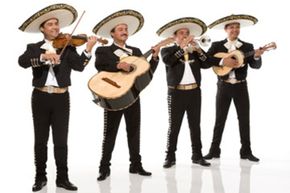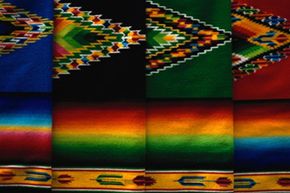Over 8,000 years ago, the ancient peoples of the Americas began to eat the colorful seed pods of the wild, tall grasses that would grow into maiz, or corn. At first, they crushed the raw kernels and drank the sweet juice. Then, they learned to toast the corn over a fire, grind it into a powder and heat it with water to create a thick corn gruel known today as atole [source:Super].
In some unknown era, natives discovered that soaking dried corn kernels in a mixture of warm water and wood ash would remove the corn's rough skin. The soft, soaked kernel could then be ground using a lava rock mortar called a molcajete and formed into corn dough called masa. The dough, when flattened by hand and cooked over a fire, formed the world's first tortillas, a staple of the traditional Mexican diet since well before the Spanish arrived in the 16th century.
Corn remains the staple of the traditional Mexican diet. Besides the iconic corn tortilla, corn masa is used to make tostadas (fried tortillas), tamales (steamed masa wrapped in dried corn husks or green corn leaves), sopes (thick disks of fried masa), gorditas (hand-formed masa cakes stuffed with beans, cheese, spiced potato and other ingredients) and regional variations, like the large, pizzalike tlayudas of Oaxaca or the triangular masa cakes of Puebla known as peneques.
Other traditional staples of the traditional Mexican diet are a wide assortment of fresh and dried chili peppers, dried beans, tomatoes and tomatillos (the small green tomatolike fruit used to make salsa verde), summer and winter squashes, pumpkin seeds, avocado, pungent herbs like cilantro and epazote, and a tremendous variety of fresh fruits like mango, lime, papaya, pineapple, orange and coconut [source: Sosa].
The Spanish introduced pork, cheese, rice, garlic, onions, wheat and animal fats into the Mexican diet. The blending of indigenous and European ingredients led to hybrid dishes like mole, a thick sauce of ground chilies, tomatoes, nuts, spices, bread, and even chocolate, as in the classic mole poblano. Pozole is a traditional hominy (large corn kernel) stew of slow-cooked pork topped with chopped cabbage, sliced radishes, corn chips, chili powder and lime. Tacos, the perfect quick meal, are fresh corn tortillas stuffed with any number of fillings: chopped grilled beef, pit-roasted pork al pastor, shredded fried pork called carnitas, and finished with onions, a pinch of cilantro and a mouth-watering array of fresh-chopped simmered salsas.
Before we get too hungry, let's talk about traditional Mexican clothing.

